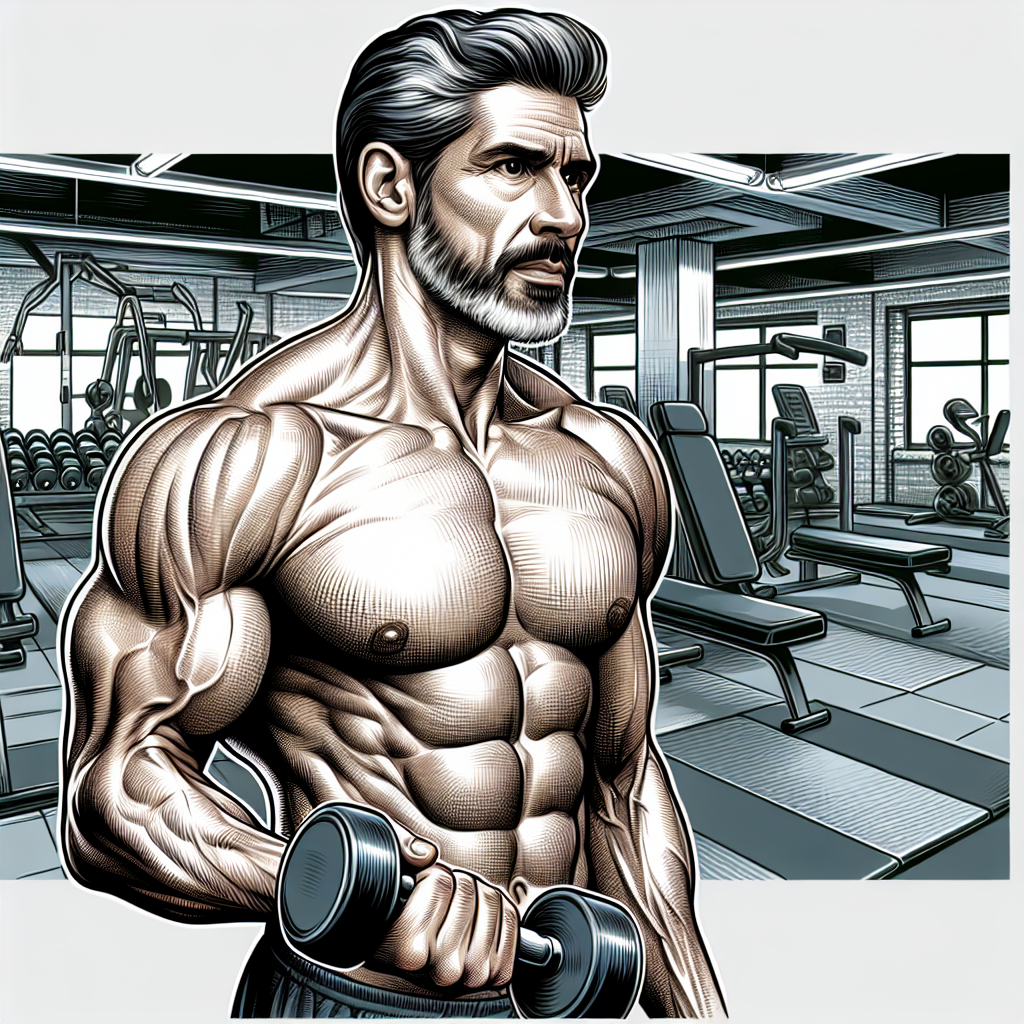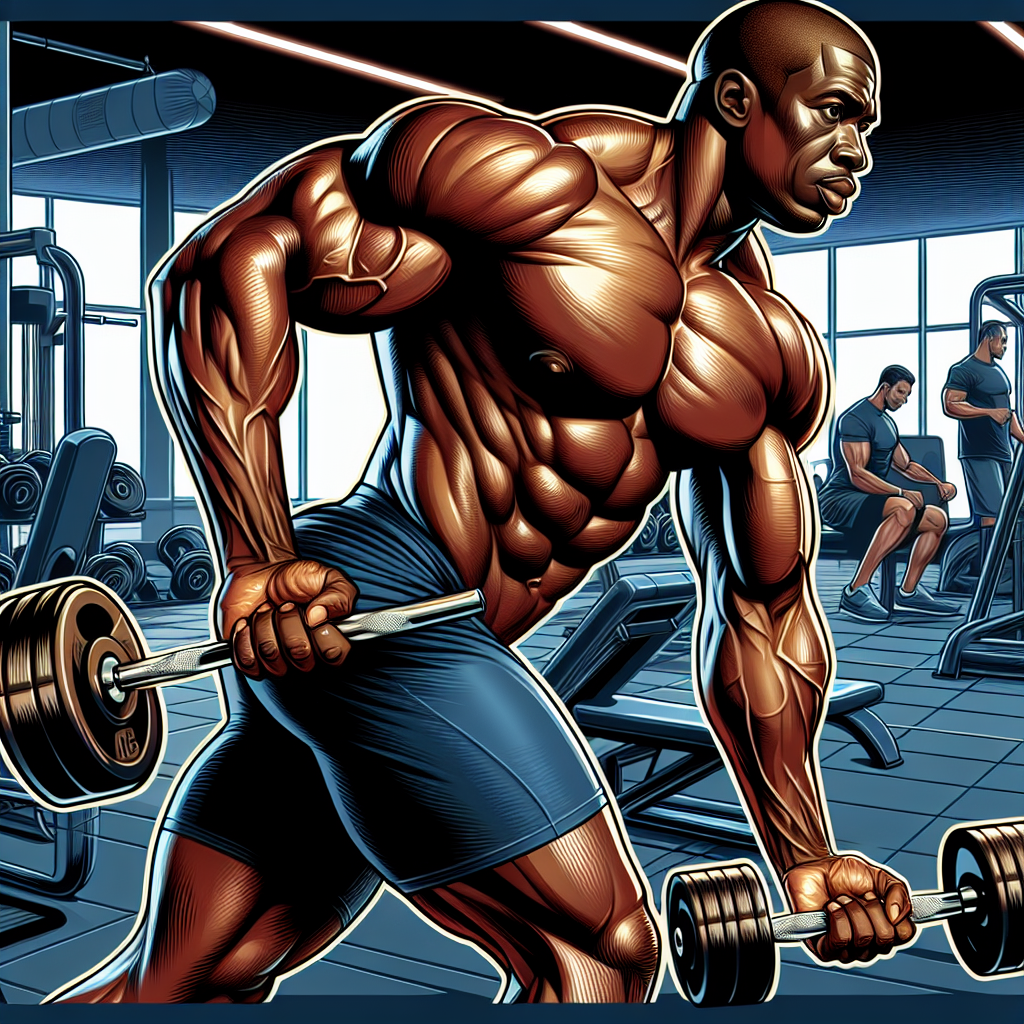Effective Strategies on How to Build Muscle in Men Over Age 45
Seemingly unsettling but perfectly doable, muscle building for men who are over 45 requires a shift from regular routines to more age-appropriate strategies. In the course of this informative article, you’re not only going to discover how you can achieve a rejuvenating body transformation, but also grasp the importance of maintaining a well-tailored workout plan suitable for your specific age cadre. Your golden years can still glitter with vitality as your muscles become toned and you feel a new surge of energy; it all begins with knowing the right approach. Buckle up for an enlightening exploration into the world of muscle building for men over 45.
Understanding the Process of Muscle Building
It’s never too late to build muscle, no matter what age you are. You may be wondering how the muscle-building process changes as you age. It’s essential to understand that as we grow older, our muscle fibers begin to reduce, which slows down our capacity to build muscle mass quickly. However, it doesn’t imply we can’t continue to build muscle; it just means we need to modify our approach.
Changes in muscle building process with age
As you age, especially once you pass the age of 45, you may start to notice certain changes in your body’s ability to build muscle mass. Due to hormonal changes and a natural decrease in anabolic activity, it becomes gradually difficult to build and maintain muscle mass. This is why a more strategic and measured approach is needed when working on muscle building for men over 45.
Importance of muscle mass for men over 45
Muscle mass plays an essential role in your overall health and well-being. It helps by boosting your metabolism, enhancing mobility, reducing injury risk, and improving your overall quality of life. For men over the age of 45, building and maintaining muscle mass can also help to combat the natural decline in bone density, diabetes prevention, and keeps your heart healthy.
The science behind muscle growth and restoration
Muscle growth and restoration is a fascinating process. When you engage in strength training or resistance exercises, your muscle fibers undergo a certain level of stress. This stress causes small micro-tears in the muscles, which then triggers an immune response leading the body to repair and rebuild these torn fibers. This process results in an increase of muscle mass and strength.
Assessing Your Baseline Fitness
Before you start on your muscle-building journey, it’s integral to understand and assess your current fitness levels.
Importance of preliminary health checks
It is essential to ensure you are in good health before you embark on any fitness venture, especially if you’re over 45. Do not underestimate the importance of preliminary health checks. It will help you identify any underlying health conditions that might affect your training regimen and could prevent possible risks or injuries during training sessions.
How to know your body composition
Understanding your body composition gives you a clear picture of your present muscle mass, fat distribution, and overall fitness level. It is not just about weighing oneself but knowing the proportion of fat and lean tissues in your body. You can monitor your body composition by using methods such as Bioelectrical Impedance Analysis, Dual-energy X-ray Absorptiometry, or simple skinfold calipers.
Identifying personal fitness goals
Everyone has different goals for their fitness journey; Some wish to build muscle, while others aspire to lose weight. Knowing your personal fitness goals will allow you to work out a specialized plan tailored to your needs.

Nutritional Requirements for Building Muscle
Maintaining appropriate nutrition is as vital as exercising when it comes to building muscle mass.
Differentiating between calories and nutrients
While the number of calories you consume will affect your muscle-building capacity, it’s also critical to focus on the quality of calories you’re consuming. Remember, all calories are not the same, and it’s possible to take in more calories and still lack proper nutrition.
Consuming adequate proteins for muscle building
As you grow older, your body’s ability to digest and absorb protein decreases. Consuming adequate protein, including both plant and animal-based sources, becomes of utmost importance when focusing on building muscle. Proteins are the building blocks for your muscles as they provide essential amino acids.
The importance of hydration
Staying hydrated is prime as it improves exercise performance, aids digestion, and promotes nutrient absorption- all essential in muscle building.
Relevance of micronutrients in muscle building
A balanced diet includes not only macronutrients (carbohydrates, fats, proteins) but also micronutrients (vitamins, minerals). Micronutrients are essential for various functions like energy production and muscle contraction and relaxation.
Choosing the Right Exercises
The path to muscle gain over 45 isn’t just about lifting heavy weights at the gym.
The role of resistance training
Resistance training is critical for muscle building, but it’s also important for maintaining muscle mass and strength as you age. Resistance training exercises like lifting weights, push-ups, pull-ups, and leg presses are effective in working out the muscles and promoting muscle growth.
Importance of cardio exercises
Despite not directly contributing to muscle gain, cardiovascular exercises are essential for your overall health. Cardio exercises like running, jogging or biking, improve heart health and endurance and help in maintaining a healthy weight – essential factors in building muscles.
Incorporating flexibility exercises
As you age, maintaining flexibility is crucial for injury prevention and improving your range of motion. It further helps you perform strength training exercises correctly. Stretching exercises or yoga can be integral to maintain and improve your flexibility.
The relevance of recovery exercises
While it’s crucial to challenge your muscles, it’s equally important to allow them to repair and recover. Light activities on your rest days like a leisurely swim or a walk optimizes recovery and promotes muscle growth.

Starting Strength Training
For men over the age of 45, embarking on a strength training journey involves understanding the basics and creating a comprehensive training routine.
Understanding the basics of strength training
The key to effective strength training is understanding your body, learning correct form, and balanced targeting of multiple muscle groups to avoid imbalances.
Developing a comprehensive strength training routine
It’s important to create a holistic strength training routine- one that takes into account your fitness level, targets all main muscle groups, and, most importantly, fits into your schedule. A well-rounded plan would include compound exercises, isolation exercises, and functional movements.
Lifting techniques for older men
Technique and form take priority over weight and quantity. As you age, the focus should be on performing movements correctly, ensuring optimal muscle activation, and minimizing injury risk.
Precactions while lifting heavy weights
Resting between sets, progressing gradually, breathing correctly, and listening to your body are essential precautions that older men need to incorporate when lifting heavy weights.
The Role of Consistency and Patience
Muscle building is not an overnight process, it needs patience and consistency.
Understanding the time frame for muscle gain
It may take several weeks or even months to see noticeable muscle gain. It’s a slow process controlled by factors like age, diet, exercise, and genetics.
Impact of regularity and consistency
Regular and consistent workouts generate maximum gains. Skipping workouts or inconsistently doing them leads to suboptimal results.
Dependence of progress on individual health and fitness
It’s important to recognize that each person’s progress is unique and may depend on factors such as initial fitness level, diet, lifestyle, and genetics.

Importance of Rest and Recovery
Rest is just as important as workouts. Your muscles repair and grow during rest periods, not the workouts itself.
Role of sleep in muscle recovery
Adequate sleep promotes muscle repair and growth. It’s during sleep that Growth Hormone, essential for muscle repair, is primarily released.
Active vs passive recovery
Active recovery involves light exercises done on rest days, stimulating blood flow and promoting muscle repair. Passive recovery involves rest without any exercise.
Understanding the signs of overtraining
Symptoms like decreased performance, persistent fatigue, increased susceptibility to injuries and sickness, disturbed sleep, and loss of appetite may be signs that you are overtraining.
Impact of stress and rest on muscle building
Stress and insufficient rest can lead to hormonal imbalances that inhibit muscle growth. This includes increased cortisol levels, which can cause muscle breakdown if chronically elevated.
Adjustments in Lifestyle
Improving muscle mass requires comprehensive changes in lifestyle.
Impact of habits like smoking and alcohol
Negative health behaviors like smoking and excessive drinking can impact muscle growth by reducing oxygen supply to muscles and disrupting the muscle recovery process.
Importance of managing stress
Chronic stress can negatively impact muscle gain. Managing stress through techniques like meditation, deep breathing, and yoga can be beneficial.
Maintaining a positive mindset and motivation
Maintaining motivation and a positive mindset is crucial for long-term success. It’s common to have ups and downs on this journey, but keeping sight of your goals keeps you anchored.

Monitoring Progress and Making Adjustments
Periodically monitoring progress and making necessary adjustments ensures you stay on track.
Periodic assessment of muscle gain
Regularly assessing muscle gain allows you to see how far you have come and to modify your fitness plan if necessary. Remember, muscle gain might not always reflect on the scale due to concurrent fat loss.
Adapting to new fitness levels
As your fitness levels improve, you would need to adjust your workouts, decreasing rest times or increasing weight or reps to continue challenging your muscles.
Incorporating changes in routine based on progress
Based on your progress, you could consider varying your workout routine, including new exercises, or even consulting with a fitness trainer if need be.
Frequently Asked Questions
Can men over 45 build muscle?
Yes, men over 45 can build muscle. Although it might be a bit more challenging due to changes in hormone levels and a slower metabolism, with dedicated effort and a carefully customized plan, muscle gain is attainable.
What exercises are most beneficial for men over 45?
Compound exercises that engage multiple muscle groups simultaneously provide maximum efficiency. Squats, deadlifts, bench press, and shoulder press are effective. Remember, including cardio and flexibility workouts are equally vital to maintaining overall health.
How much protein should men over 45 consume for muscle building?
Protein plays a critical role in building and repairing muscles. Men over 45 engaging in a muscle-building program should aim for approximately 1 to 1.2 grams of protein per kilogram of body weight each day.
What are the risks associated with heavy weight lifting at this age?
While weight lifting is beneficial for muscle building, it does carry certain risks if not performed correctly. These risks include strains, sprains, and fractures. Following correct form, staying hydrated, warming up before lifts, and allowing ample recovery time minimizes these risks.



Pingback: Mastering the Art of Muscle Building: A Comprehensive Guide for You - Lose Weight With Absolute Minimal Diet - Your All In One Guide to Weight Loss & Nutrition
Pingback: Understanding And Combating Loss Of Muscle In The Upper Right Arm: How To Build Up